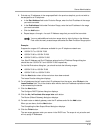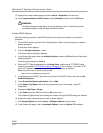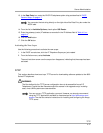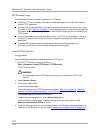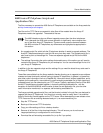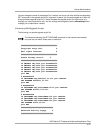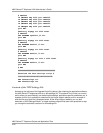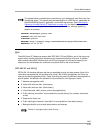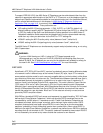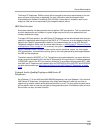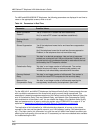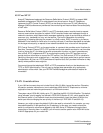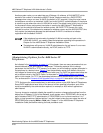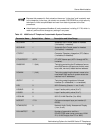
Server Administration
QoS
4-23
DNSSRVR=”dnsexample.yourco.com”
DIRSRVR=”123,123,123,123”
DIRTOPDN=”yourco”
WMLHOME=”http://support.avaya.com/elmodocs2/avayaip/4620/home.wml”
WEBPROXY=”11.11.11.11”
QoS 4
The 4600 Series IP Telephones support both IEEE 802.1D/Q and DiffServ, and in the future may
support other, possibly proprietary, procedures for implementing Quality of Service. In addition,
other network-based QoS initiatives such as UDP port selection do not require support by the
telephones, but nonetheless can contribute to improved QoS for the entire network.
IEEE 802.1D and 802.1Q 4
IEEE’s 802.1Q standard defines a tag that can be added to voice and data packets. Most of the
information associated with this tag deals with Virtual LAN (VLAN) management, but 3 bits are
reserved for identifying packet priority. These 3 bits allow any one of 8 priorities to be assigned to a
specific packet. As defined in the standard, the 8 priorities are, from highest to lowest:
7: Network management traffic
6: Voice traffic with less than 10ms latency
5: Voice traffic with less than 100ms latency
4: “Controlled-load” traffic (mission-critical data applications)
3: Traffic meriting “extra-effort” by the network for prompt delivery (for example, executives’
e-mail)
2: Reserved for future use
0: Traffic meriting the network’s “best-effort” for prompt delivery (the default priority)
1: Background traffic such as bulk data transfers and backups
The sample below is intended as an example only; your settings will most likely vary from
the settings shown. This sample assumes specification of a DNS Server, parameters for
the 4630/4630SW Directory application, and a 4620 web browser. See Administering
Options for the 4600 Series IP Telephones, on page 4-28, for details about specific
values. You need only specify settings that vary from defaults, although specifying
defaults is harmless.
Priority 0 is a higher priority than Priority 1.



